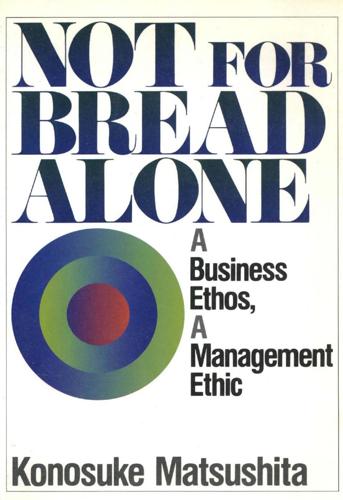
Not for Bread Alone: A Business Ethos, a Management Ethic
by
松下幸之助
Published 14 Jun 1984
FOR A Business Ethos, A Management Ethic Konosuke Matsushita The author is founder, and presently executive advisor, of Matsushita Electric Industrial Company, Ltd. KONOSUKE MATSUSHITA was born in 1894. the youngest of eight children of a fa rm er. Undeterred by chronic illness and meager funds, he started his business in a single rented room. He went on to build one of the biggest and most respected electrical appliance firms in the world. This volume, containing his observations and insights over the years, is testimony to the quality of experience that has helped make Mr. Matsushita the manager par excellence in Japanese, and world, industry.
…
Youth is eternal for those Who are full of faith and hope And greet the challenges of each new day With courage and conftdence. KONOSUKE MATSUSHITA May 1984 16 Introduction Konosuke Matsushita was born November 27, 1894, the third son and youngest of eight children of Masakusu, a rice farmer, and his wife Tokue, in the countryside of Wakayama prefecture, an agricultural region southeast of Os aka. His father was a member of the local assembly and was employed for a time in the village government offICes. The Matsushita family held lands passed down for generations and was quite well off, and Konosuke's early childhood was happy and carefree. But in 1899, the family went through a profound crisis.
…
The Si noJapanese War of 1894-95 was followed by a period of economic growth, and stock and commodities exchanges were set up throughout the country as a means of stimulating local industry. Many people were caught up in the rush of speculation, and Konosuke's father was one of them. Not long after he began investing in the local exchange, catastrophe came; the market crashed, and Masakusu lost his entire holdings, including the ancestral home and lands. Following upon that disaster, both of Konosuke's two older brothers died, and Masakusu, unable to lead his family out of destitution himself, pinned his hopes on Konosuke, who 17 NOT FOR BREAD ALONE became the Matsushita heir at the age of four. At nine, Konosuke left primary school and went alone to live in Osaka, where he became an apprentice in a charcoal brazier shop.
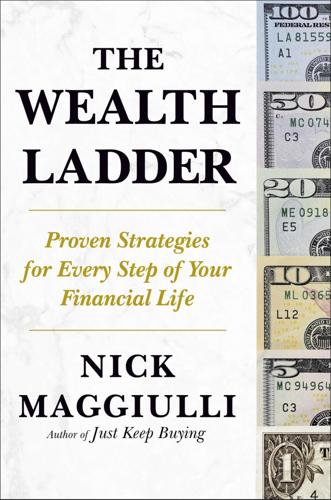
The Wealth Ladder: Proven Strategies for Every Step of Your Financial Life
by
Nick Maggiulli
Published 22 Jul 2025
These divisions gave employees and managers more ownership over their business lines. As a result, Matsushita eliminated the layers of corporate bureaucracy that had held him back earlier in his career. Many other Japanese companies eventually copied Matsushita’s corporate structure after hearing of its success. This earned Matsushita the nickname “the God of Management.” At the time of his death in 1989, Panasonic was the largest consumer electronics company in the world.[2] Kōnosuke Matsushita’s story perfectly illustrates how we must shift our strategies to continue progressing in our careers.
…
For this, we turn to our next chapter on earning up the Wealth Ladder. Chapter 2 Earning up the Wealth Ladder You may have not heard of Kōnosuke Matsushita, but he is one of the greatest businessmen in history. Matsushita was born in 1894, the youngest of eight children, and grew up in a farm community south of Osaka, Japan. He got his first job at age fifteen in the electrical industry and was promoted multiple times within a few years. By age twenty-two, he was an inspector, the highest paid position available to him. Though Matsushita had reached the top job at his company, he still wanted to do more with electricity. So he designed an improved electrical socket and pitched it to his supervisors.
…
For this reason, you can see why certain strategies on the Wealth Ladder may not work for everyone in every stage of their life. Some people are more suited to starting a business than others and some need more experience before they can go out on their own. This explains why it’s easier to pursue higher-level strategies once you’ve already made some progress up the Wealth Ladder. This is exactly what Kōnosuke Matsushita did. And you can do the same too. Once you have some money saved, you’ll have more options at your disposal, and you can take bigger chances to earn more. If you’ve ever played chess, you’ll know this concept well. A certain move at a certain point in time may be foolish. But just a few turns later, that same move could shift the game in your favor.
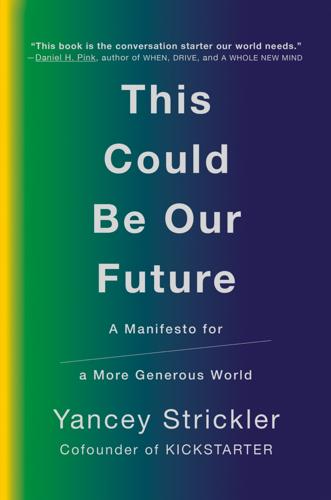
This Could Be Our Future: A Manifesto for a More Generous World
by
Yancey Strickler
Published 29 Oct 2019
Called Not for Bread Alone, it was a series of essays from the long career of a Japanese businessman named Konosuke Matsushita. Matsushita led an extraordinary life. In 1918, he started one of the first electrical companies in Japan, which he ran for more than forty years. That company continues to operate today under the name Panasonic. Not for Bread Alone shares philosophies and lessons from Matsushita’s long career, which is remarkable not just for its longevity but also for its broader idea of prosperity. Here’s Matsushita addressing his employees in 1932: “The mission of a manufacturer is to overcome poverty, to relieve society as a whole from the misery of poverty and bring it wealth.
…
Financial targets would remain to ensure sustainability and profitability, but goals and metrics associated with Bentoist values would be elevated alongside them. The organization would shift from a singular focus on financial maximization to a dual focus on financial performance and creating value in whatever ways its mission called for. This would bring every organization closer to the “spirit of coexistence and co-prosperity” that Konosuke Matsushita said companies and societies should share. “Every company, no matter how small, ought to have clear-cut goals apart from the pursuit of profit, purposes that justify its existence among us,” he wrote. “Such goals are an avocation, a secular mission to the world.” For a company whose mission focuses on improving the health of the earth, the environmental impact of its products should be as serious a concern as the company’s profitability.
…
Schumacher, Small Is Beautiful: Economics as If People Mattered Joseph Stiglitz, Amartya Sen, and Jean-Paul Fitoussi, Mismeasuring Our Lives: Why GDP Doesn’t Add Up Business Yvon Chouinard, Let My People Go Surfing: The Education of a Reluctant Businessman Phil Knight, Shoe Dog: A Memoir by the Creator of Nike Michael Lewis, Liar’s Poker Konosuke Matsushita, Not for Bread Alone Daniel H. Pink, Drive: The Surprising Truth About What Motivates Us Financial Independence Retire Early Chris Martenson and Adam Taggart, Prosper! How to Prepare for the Future and Create a World Worth Inheriting Medicine Siddhartha Mukherjee, The Emperor of All Maladies: A Biography of Cancer David Wootton, Bad Medicine: Doctors Doing Harm Since Hippocrates FURTHER WATCHING The Adam Curtis films The Trap, The Century of Self, and HyperNormalisation NOTES INTRODUCTION front page of China Daily: The China Daily headline ran on October 27, 2017.

The Golden Passport: Harvard Business School, the Limits of Capitalism, and the Moral Failure of the MBA Elite
by
Duff McDonald
Published 24 Apr 2017
“I’ll take care of everything,” Bower replied.15 Bower ran into problems when Hotta told him in December 1980 that he didn’t think he deserved the honor of such a distinction. But Hotta offered to talk to his friend Konosuke Matsushita, the wealthiest man in Japan, to see if he would accept such an honor. That conversation took place in January 1981, and Matsushita accepted. In November 1981, McArthur visited Matsushita in Japan to pick up the check, and the Matsushita Chair of Leadership was born. Earlier that year, Bower had also been instrumental in defending the case method from an attack by Harvard president Derek Bok. We will return to this episode in chapter 38, but for now suffice it to say that not much of major import happened at HBS without Bower’s involvement.
…
“She is happy to have what amounts to a corporate governance fraud as a face to the international business community. . . .”22 On the subject of individual entrepreneurship, it’s a sign that a professor has made it at HBS when they’re able to institutionalize their consulting by starting an actual company to handle all that outside business, with a hilarious number of them using the word institute in their name. There is John Kotter’s Kotter Institute. (Like Kanter, Kotter sees no problem in enjoying a company’s largesse while simultaneously promoting it. In 2006, while serving as the Konosuke Matsushita Professor of Leadership at HBS, he wrote a book, Matsushita Leadership, in praise of the company’s founder.) There is Dr. Harry Levinson’s Levinson Institute. Clayton Christensen’s nonprofit Christensen Institute applies his theories about disruption to health care and education, while the for-profit Innosight does the same thing for business.
…
Paul, 153, 155, 203, 205, 206, 208, 402, 403 Mark, Rebecca, 514 marketing, 168, 286 “Marketing Myopia” (Levitt), 261–63, 296 Markkula, Mike, 320 Marriott, Richard, 401–2 Marshall, George, 229 Martin, Boyce F., 234 Martin, Roger, 235, 283, 363–64, 419, 461 Massachusetts Institute of Technology (MIT), 25, 121, 124, 244; Sloan School of Management, 80, 309, 392, 394 Masters of Private Equity and Venture Capital, The (Finkel), 127 Matsushita, Konosuke, 206; HBS endowed chair, 205–6 Matsushita Leadership (Kotter), 409 Matthews, John, 436 May, George O., 26 Mayers, Frank, 169 Mayo, Anthony, 350 Mayo, Elton, 37, 76–90, 111, 118, 186, 222, 244, 308, 355; as fraud, 78, 88; Hawthorne study, 83–85, 87, 88; at HBS, 81–90, 93; human relations movement, 217; “The Mayo Weekend,” 90; Rockefeller funding, 81, 82–83, 90; theories of, 77–80, 84–86, 112, 113, 133, 212, 315 MBA Oath, 565, 567–68 MBAs: Amazon and, 10, 90; Champion article and, 552; class of ’49, 167–74; critics of, 210, 290–92, 483–89, 564–65; Enron and, 512–17; ethical lapses and, 437; “failure equals success,” 172; financial crisis of 2007–10 and, 546–53, 566; in Galbraith’s “technostructure,” 342; HBS grads as most desirable, 356, 461; innovation and, 120–21; Jensen and erosion of higher ideals, 382; MBAs awarded, 144, 217, 461; McKinsey and, 199, 202, 206, 207–8, 338, 460, 474, 548–49; need for questioned, 494–95; postwar economic boom and, 180; running America, 276, 289 (see also Bush, George W.); salary increase, 383; Schwarzman on, 470–71; six problems of, 292; students enrolled as, 150; Thiel’s opinion of, 120; U.S. institutions offering, 193; weakness of, 194–95; women, 203; working on Wall Street, 10, 96, 359, 369.
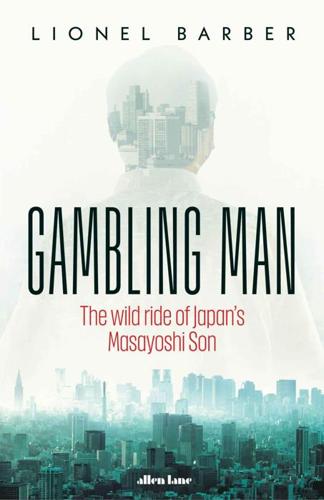
Gambling Man
by
Lionel Barber
Published 3 Oct 2024
Ive, Jony, 335 Jain, Anshu, 183, 184 Japan: American occupation (1945-51), 12, 17; Black Ships (kurofune) (1853), 116–17; Communist party, 13; corruption scandals at millennium, 155; culture of perfection, 6; in early post-war years, 12–14, 15–17, 178; earthquake (11 March 2011), 213–22, 223; Great Kanto Earthquake (1923), 10; high demands on quality, 65; Hiroshima and Nagasaki atomic bombs, 12; imperial expansion from 1900s, 9, 11; Kobe Earthquake (1995), 137; Masa returns to (March 1980), 47; Meiji Restoration (1868), 2, 3, 68, 116–17; myth of postwar unity/homogeneity, 17, 28–9; nuclear power in, 213–22; overthrow of Ashikaga shogunate (1573), 208; parenting tradition in, 20; personal computer revolution in, 49, 51, 53–4; real estate bubble (late 1980s), 1; relations with Communist China, 175–6; Renewable Energy Bill (2011), 219–20; resistance to change in, 48, 83–4; and Second World War, 11–12, 17, 34, 73; sensitivity to long-term purpose, 146–7, 202; tea ceremony, 206–7; technological miniaturization in, 48–9; ‘warring states’ period, 162–3 see also Japanese economy; Korean migrants to Japan (zainichi); Kyushu, island of; Tokyo; Tosu Japan Patrol Security (Secom), 64, 65 Japan Post, 155, 156, 288 Japan Research Institute, 52 Japan Telecom, 166, 171–4, 182 Japanese Association of Finance Company (JAFCO), 84 Japanese economy: Anglo-Saxon style deregulation in, 69; bubble bursts (1989), 1, 82–3, 124, 136–7; Confucian capitalists, 119; consumer electronics industry, 34, 35, 43–5, 48–9, 65–7, 89–90; ‘copy and compete’ model, 90; corporate scandals in 1990s, 124; cultural barriers to US market entry, 73, 89–90; economic miracle, 21, 48, 178; exclusion of ethnic Koreans, 10, 14, 15–19, 21–3; failure to develop US-style start-up culture, 83–4; fiscal stimulus policies in late 1980s, 70, 80–81; impact of Plaza Accord (1985), 69–70, 80; and imperial expansion, 11; industrialization, 9, 21; just-in-time manufacturing model, 48; Keidanren (business federation), 220–21; ‘Lost Decade’ (1990s), 1, 82–3, 97–9, 136–8; mobile phone market, 157, 166, 172, 173–4, 178–88, 189, 191, 193, 221, 334; neo-liberalism in post-bubble period, 155–6; real estate bubble (late 1980s), 3, 80–83, 84–5, 124, 136; ‘salaryman culture’, 3, 21–2, 124; stock market bubble (late 1980s), 80–83, 84–5; TV market, 112, 113–16, 117–19, 120, 121; weak financial governance standards, 123; zaibatsu, 5, 134 Jobs, Steve, 4, 35, 48, 56, 72, 73, 178, 189–91, 192–3; death of (October 2011), 223; fabled return to Apple, 102–3, 190; has terminal cancer, 191–2 Joshin Denki (electronics retailer), 53–4, 55 Kabuki theatre, 161 Kageyama, Takumi, 106 Kamaya, Takayuki, 203, 204, 208–9 Kan, Naoto, 214–15, 219–20 Kasai, Kazuhiko, 150, 167, 184–5, 195, 196–7, 203 Katerra (construction company), 320 Katsumata, Tsunehisa, 214 Katzenberg, Jeffrey, 236 Kawamoto, Yuko, 322–3 Kawashima, Masahide, 56 KDDI, 166, 179, 186, 187 Kelly, Brian, 126 Kennedy, Chris, 253 Khashoggi, Jamil, 278–9 Kimiwada, Kazuko, 195, 204 Kingdom Ventures, 278 Kingston Technologies, 108–11, 115, 124, 146 Kita-Kyushu, 21–2 Kitao, Yoshitaka, 96–8, 109–10, 115, 123, 124, 128, 139, 149, 150; parts company with Masa, 166–7 Kogan, Misha, 46* Koizumi, Junichiro, 155–6 Korea: divided on 38th parallel (1951), 17; Japanese annexation of (1910), 9; victims of Japanese wartime atrocities, 11–12, 17; Yangban class, 9–10, 13, 16 Korean migrants to Japan (zainichi): ‘alien registration cards’, 24, 28*; assuming of Japanese names, 10, 16–17, 28–9, 42–3, 44, 50, 78–9; dilemma of dual identity, 6, 10, 18, 23–4, 28–9, 31, 38–9, 49–50, 85–6, 211–12; in early post-war years, 12–14, 15–17; family as bedrock for, 29–30; first wave in early twentieth century, 9; legal no-man’s-land for, 10, 17, 50; massacres of (1923), 10; naturalization under ethnic name, 79*; as outcasts in 1950s/60s, 17–18, 28–9; and pachinko industry, 21–2, 50; prejudice/violence against, 10, 18, 28, 50; and Second World War, 11–12; Son’s family history, 6, 9–11, 13–14, 15–17, 211–12 Kotick, Bobby, 72–3 Kraft, 248 Kravis, Henry, 239 Kroll (corporate espionage company), 241 Kudo, Hiroshi, 54 Kumada, Dr Hiromitsu, 68–9 Kyushu, island of, 6, 9, 11–12, 14, 22, 31, 35, 44, 216; Fukuoka SoftBank Hawks baseball team, 188, 196–7; New Otani Hakata hotel, Fukuoka, 49 Langham Huntington, Pasadena, 290 Lantzsch, Tom, 245 Las Vegas, 72, 89, 93, 94–5, 103 Layard, Richard, Happiness, Lessons from New Science, 209* Lazard Freres bank, 91, 100, 246–50 Lee, Min Jin, 22 Lee Hsien Loong, 224 Lee Wong-jo (grandmother of Masa), 11, 13–14, 15, 17–18, 19, 23, 29, 211 Legend, John, 290 Legere, John, 227 Lehman Brothers, 139, 194, 196, 197, 235 LeMay, William, 172 Levy, Jordan, 87–9, 107, 123, 139, 140–41, 237–8, 271, 273 Lewis, Michael, The Big Short, 183 Liberal Democratic Party (LDP), 155–6 Light (advanced camera developer), 285–6 Long Term Credit Bank (Shinsei bank), 171–2 Lotus, 74, 77 Lu, Hong, 36, 38–9, 41, 42–3, 56, 67, 147; and China, 143, 145–6; and Park An-nam loan scheme, 62–3, 63*; video games venture (Unison World), 46, 47, 50, 62–3; visits a sick Masa in Japan, 61–2 Lycos, 101 Lyft, 283 Lynton, Michael, 236–7 M Speech Systems Inc., 42–3 Ma, Jack, 142–4, 145, 147, 168–70, 174–5, 176–7, 219; leaves SoftBank (June 2020), 313–14, 315; and Xi Jinping’s crackdown, 321–2 MAC (Masa’s private company), 86, 93, 122, 127, 128, 130, 131 MacArthur, General Douglas, 12, 25, 71 Macau, 95 Malone, John, 240 Management Research Institute (MRI), 52, 53, 54 Manchester City football club, 266 Mannesmann, 180 Marks, Michael, 320 Marsalek, Jan, 306 Matsushita, Konosuke, 34 Matsushita, Manabu (Park An-nam), 62–3 May, Theresa, 252 McBride, John, 113, 114, 115, 116, 117, 118, 120 McDonald’s Japan, 24, 25 media, mainstream: Asahi Weekly profile of Masa (1982), 56; and bursting of dot.com bubble, 149–50; DataNet (magazine publishing company), 69; and digital revolution, 2, 101, 113–16, 117–19, 120–21; doorstepping by business journalists, 206; Gekkan Keieijuku profile of Masa (1994), 90; Japanese computer magazines, 65, 69, 74, 86; Japanese newspapers, 56, 64, 149–50; Japan’s TV market, 112, 113–16, 117–19, 120, 121; JSkyB, 117–19, 120; Masa enters set-top business, 119; and Murdoch, 112–13, 114–16, 117–19, 120–21; Phoenix’s stable of PC magazines, 78, 124; profile of Masa (2003), 165–6; Sky PerfecTV, 120; Softbank’s publishing division, 56–7; TV Asahi, 11–19, 115–16, 117; Ziff-Davis computer magazines, 78, 91–3, 100, 101, 102, 103, 124, 125, 127, 128–9, 158 Meeker, Mary, 132–3 Merrill Lynch, 132 Meta (Facebook), 236, 259, 297, 303, 307, 329 MIC (Masa’s private company), 125 Microsoft, 33, 74, 89, 137, 179, 329; ASCII partnership with Nishi, 65–7; Bing, 232; rivalry with Novell, 76–7; Speed-Net venture with SoftBank, 159; uses Softbank as distributor, 77 Middle East petro-states, 260–66, 267, 269, 278–9, 281, 282, 284, 290, 291, 300 see also Saudi Arabia Miller, Chris, Chip Wars, 331 Misra, Rajeev, 197, 232, 242, 262, 274, 294, 296; accumulation of vast wealth at SoftBank, 317–18; and Arora honey-trap mystery, 240–41, 287, 288–9; character of, 181, 183, 240–41, 260, 283, 289; conflict with Arora, 235–6, 240–41, 287, 289; conflict with Claure, 287–8, 289, 316–17; at Deutsche Bank, 181–2, 183, 235, 259; expertise in structured credit, 181, 235, 312–13; heads Vision Fund, 282–3, 284–5, 286, 287–8, 304, 317, 326; joins Softbank, 235–6; launches One Investment Management, 326; leaves SoftBank (2022), 326; leaves SoftBank board (November 2020), 318; and Masa’s personal spending, 181–2; and Naheta, 304, 306, 308, 309–10; and Northstar, 311, 312–13; and Vodafone Japan purchase, 182–3, 184–5, 231; and WeWork, 276, 278, 326* Mitchell, Edson, 183 Mitsubishi, 98, 101 Mittal, Sunil Bharti, 182, 223–5, 266, 271 Miyamoto, Musashi, 168 Miyauchi, Ken, 77, 218 Mizuho (Japanese bank), 300 mobile internet: 3G technology mobile phones, 157, 182, 192–3; and ARM chips, 244, 245, 247, 330; as central to Masa’s expansion plans, 189, 190–91, 223–4; China Mobile, 225, 235; and Japan Telecom, 166, 171–4, 182; and Steve Jobs, 189–91, 192, 193; Masa’s Sprint–T-Mobile merger plan, 225–7, 232, 235, 240, 267, 268; mobile phone market in Japan, 157, 166, 172, 173–4, 178–88, 189, 191, 193, 216, 218, 221, 334; ‘portability’ of mobile phones, 179, 191; SoftBank Mobile, 178–88, 216, 218, 221, 223–4, 237, 279–80, 296, 334, 335; SoftBank Mobile IPO (2018), 279–80; T-Mobile-Sprint merger (2020), 298, 317–18, 323–4, 334 Modi, Narendra, 262, 271 Mohammed bin Salman, Crown Prince, 55, 260, 263, 264–5, 276, 278, 291–2; and Jamil Khashoggi murder, 278–9 Mohammed bin Zayed, Crown Prince, 265–6 Montgomery, Emily, 304 Morgan Stanley, 132–3, 139, 159, 248, 249, 251 Mori Hamada Matsumoto (law firm), 311, 314 Morita, Akio, 34 Moritz, Michael, 102–3, 104, 105–6, 135, 281–2, 316 Morningstar Japan, 107, 137, 138 Morrow, Bill, 179, 180 Mozer, Forrest, 36–7, 39, 40–41, 42, 43–5, 46, 171* Al Mubarak, Khaldoon, 266 MUFG (Japanese bank), 300 Munger, Charlie, 297 Murdoch, James, 120 Murdoch, Rupert, 112–13, 114–16, 117–21, 160, 205, 240, 286 music industry, 236–7, 239–40 Musk, Elon, 35, 259, 274–5, 331 Myners, Lord, 254 Nagamori, Shigenobu, 163* Nagura, Satoshi, 130 Naheta, Akshay, 285, 286, 303–7, 308–10, 311, 312, 313, 314 Nakamura, Masao, 192 Narula, Herman, 286* Nasdaq stock market, New York, 2, 4, 138, 148, 149 National Semiconductor (NSC), 43, 44–5 Nawa, Takashi, 161 NEC, 49 Negri, Mahendra, 137 Netflix, 307 Netscape, 101, 102 Neumann, Adam, 269, 270–73, 276–7, 290–91, 293, 301, 308, 325; and Project Fortitude, 277–8, 279–80 News Corporation, 112–13, 115, 116, 117–19 Nextel, 225 Nikko Securities, 84 Nippon Credit Bank (NCB, Aozora), 138–9, 158 Nippon Sheet Glass, 247 Nishar, Deep, 237, 316 Nishi, Kazuhiko, 65–7, 77 Nobunaga, Oda, 208 Noda, Kazuo, 52 Noda, Yoshihiko, 220 Nomura Securities, 65, 84, 85, 86, 96–7, 98, 124 Noorda, Ray, 76, 77 Norris, Floyd, 149 Novell (Utah computer company), 76–7 Noyce, Robert, 35, 101–2 NTT (Telecoms company), 69, 89, 165, 166, 183; control of infrastructure, 158, 159–61, 166; Docomo (mobile unit), 179, 186, 187, 188, 189, 191, 192–3, 225; Masa’s battle with, 156–7, 158–9, 160–63, 168, 187, 188, 189, 191, 192–3; and next-generation iPhone, 192–3 Nvidia, 304–5, 308, 311, 323, 330–31 Oakland, California, 42, 45, 56; Holy Names College, 31, 32–4, 36; Ice Creamery, on Lakeshore Avenue, 38, 39, 46–7; Yoshi’s jazz bar and restaurant, 46–7 Obama, Barack, 226, 227, 267, 268 Obunsha media group, 115–16 Okimoto, Dan, 70 Ola (ride-hailing service), 241 Omori, Yasuhiko, 63–5, 67, 69, 70–71, 84 OneWeb, 265–6, 300–301 Onoue, Nui, 81 Open AI, 327, 328 Oracle, 140, 189 Osborne, George, 252 Ovitz, Michael, 107* OYO Hotels, 237, 290, 299 pachinko, 21–4, 50, 54–5, 85 Packard, David, 102 Page, Larry, 232, 233–4, 235 Palo Alto Networks, 289* Paris St Germain football team, 261 PayPal, 103, 275 PC Week, 78 PerfecTV, 120 Perry, Commodore Matthew, 116 Pfizer, 248, 249 Philopon (stimulant), 15 Phoenix Technology, 77, 124 pigs, 16–17, 18–19, 185–6 Pilkington, 247 Popular Electronics, 33, 78 Porte, Thierry, 139 Priebus, Reince, 268 Providence Capital Partners, 185 Putin, Vladimir, 324 Al-Qasabi, Majid, 264 Qatar, 260, 261–3, 278–9 Qualcomm, 139 radar technology, 34 Raine Group, 205, 224 Rakuten (media company), 283 Rattner, Steve, 91–2, 93 Reagan, Ronald, 181, 272 Red Sea regatta, 291–2 Rieschel, Gary, 89, 105, 109, 133, 134, 140, 141, 147, 148, 150 Ripplewood (US private equity firm), 171–4, 180 Roberts, Brian, 240 Robey, Simon, 248–9, 250–51, 254 Robey Warshaw, 249, 252 robotics, 210, 244, 275, 295, 328, 329, 330 Rockefeller Center, New York, 80, 101 Roivant, 328 Rothschild family dynasty, 261 Rucker, William, 246–8, 250, 254 Al-Rumayyan, Yasir, 264, 265, 291, 318 Russo-Ukraine war (from 2022), 324 Sago, Katsunori, 288, 318, 325 Sakamoto, Ryoma, 2–3, 68, 202* Sama, Alok, 237, 246, 248, 250, 265, 267 San Francisco, 30 San Francisco treaty (1951), 17 Sanyo, 43 Sarin, Arun, 180–81, 182–3, 184 Sasaki, Tadashi, 34, 35, 36, 39–40, 43, 50, 52, 55, 63–4 Sato, Eisuku, 215* Sato, Yuhei, 215–16, 218 Saudi Arabia, 5, 55, 260, 269, 290, 294, 318; invests in Vision Fund, 263–5, 266, 267, 269, 276, 278–9, 281, 282, 284, 291, 326; and Jamil Khashoggi murder, 278–9; and Vision Fund 2 plan, 276, 291 SBC (formerly BellSouth), 165 Schmidt, Eric, 232–3, 234 Schreiber, Ron, 87–9 Schwartz, Mark, 219, 270–71, 276, 278 Schwarzman, Steve, 167, 268 Schwarzman Fellows programme, 102* Second World War, 11–12, 17, 34, 73 Segars, Simon, 245, 246, 247, 253, 255 self-driving cars, 244, 329 Semel, Terry, 164 Semmoto, Sachio, 160 Sequoia Capital, 103, 104, 105, 281–2 Serramonte high school, Daly City, 30, 31–2, 76 Shaheen, George, 135 Sharp (electronics company), 35, 39–40, 43, 45, 50, 55, 64, 66, 118 She, Chauncey, 143, 147 Shearman & Sterling (New York law firm), 241 Shimizu, Masataka, 214 Siegel, Bugsy, 94 Silicon Valley, California: and ARM IPO (14 September 2023), 330; and Bit Valley Association, 1; Cringely’s book on, 163; culture of, 5, 101–2, 234–5, 238; geography of, 34; as global VC centre, 260, 262; Google’s HQ in Mountain View, 232–3; and Masa’s Comdex purchase, 95; Masa’s FAANGs, 303, 307–8, 312–14, 315–16; Masa’s seat on Cisco board, 90; Masa’s VC investment in Yahoo!
…
A chance encounter with a visiting businessman, a legend in his native Japan, brought the nascent PC revolution in California alive in the young man’s mind and changed his life’s trajectory. Tadashi Sasaki belongs among the elite founders of the Japanese consumer electronics industry, a giant who stands alongside Akio Morita, pioneer of the Sony Walkman, and Konosuke Matsushita, founder of Panasonic. His reputation as a world-class engineer was first established during the war. His expertise was radar technology, a skill he acquired after studying British equipment seized after the fall of Singapore in 1941. The following year, American B-25 bombers flying 700 miles from the USS carrier Hornet struck Kobe, Osaka and Tokyo and other targets on the mainland.
…
In his early days as a student-entrepreneur, Masa kept in touch with Dr Sasaki, now head of research and development at Sharp. In early August 1978, Sasaki received a call from a payphone in Japan. Masa said he was on a visit to sell an exciting new product: the prototype of a talking electronic translator. Masa had written to 50 Japanese home appliance manufacturers; but the response was crushing. Matsushita Electric Industrial (Panasonic) in Osaka turned him away at the entrance, and Sanyo Electric didn’t even bother to listen to his sales pitch. Sharp was his last best chance, the equivalent of a Hail Mary pass in an American football game. On his visit to the Sharp research centre in Nara, Masa was accompanied by his father, Mitsunori, who had travelled seven hours by train from the family home in Tosu.
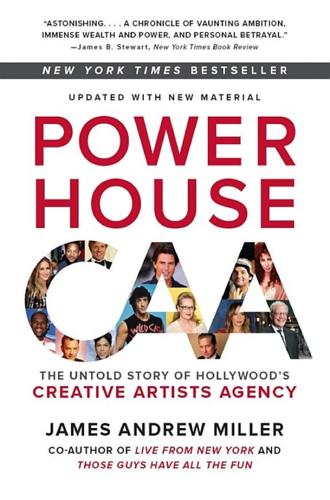
Powerhouse: The Untold Story of Hollywood's Creative Artists Agency
by
James Andrew Miller
Published 8 Aug 2016
In addition to the scripts he read himself, Michael always relied on the head reader for a lot of his material. I remember one task that fell far outside of the norm, though: When Michael was heading to Japan for one of the first big—and secret—meetings with Matsushita, he wanted coverage of all of the writings of Konosuke Matsushita, the founder of the company—what we know as Panasonic. So I had to read all of his books and all of his key writings, and provide Michael with a full rundown on what drove Matsushita-san, what he believed, and how he built his company. MICHAEL OVITZ: Sandy ran the whole business group, a department with something like eight MBAs in it. I asked Sandy to tell me what other Japanese companies might be interested in the film or media business.
…
Ron Hubbard Kate Hudson Arianna Huffington John Hughes Nobuyuki Idei Bob Iger Henry Ishii Doug Ivester Hugh Jackman Michael Jackson Craig Jacobson Stanley Jaffe Lebron James Mort Janklow Jay-Z Jefferson Airplane Jerky Boys Steve Jobs Earvin “Magic” Johnson Mark Johnson Peter Johnson Angelina Jolie Jerry Jones Barry Josephson Nancy Josephson Robert Kamen Stan Kamen Art Kaminsky Garry Kasparov Jeffrey Katzenberg Phil Kaufman Max Kellerman Don Keough Irvin Kershner Callie Khouri Nicole Kidman Simon Kinberg Stephen King George Kirby Kevin Kline Phil Knight Johnny Knoxville Paul Kohner Ted Koppel Ted Kotcheff Jim Lampley Eugene Landy Jessica Lange Sherry Lansing Tom Lassally Abe Lastfogel Martin Lawrence Norman Lear Heath Ledger Chris Lee Brian Leetch Nat Lefkowitz Kim LeMasters Jay Leno John Lesher David Letterman Gary Levine Randy Levine Barry Levinson Steven Levinson Mike Levy Roy Lichtenstein Ed Limato David Lindy John Logan Eva Longoria Jennifer Lopez Jon Lovitz David Lynch Larry Lyttle Ali MacGraw Madonna Albert Magnoli Frank Mancuso Michael Mann Ricky Martin Steve Martin Konosuke Matsushita Elaine May Melissa McCarthy Mark McCormack Guy McElwaine Don McGuire Chris Meledandri John Mellencamp Sue Mengers Burgess Meredith Barry Meyer Ellen Meyer Kelly Meyer Al Michaels Lorne Michaels Jimmy Miller Rand Miller Robyn Miller Milli Vanilli Yvette Mimieux David Miscavige Matthew Modine Les Moonves Demi Moore Tommy Mottola Rupert Murdoch Brian Murphy Eddie Murphy Bill Murray Mike Myers Bahman Naraghi Nicholas Negroponte Lynn Nesbit Paul Newman Mike Nichols Jack Nicholson Christopher Nolan Bob O’Connor Carroll O’Connor Adam Oates Norio Ogha Masao Ohashi Brian Oliver Mo Ostin Dave Ovitz Judy Ovitz Al Pacino Manny Pacquiao Sarah Jessica Parker Dolly Parton Alexander Payne I.
…
SANDY CLIMAN: After several strategy discussions, the JVC team reported back to Matsushita management. Like scouts who are replaced by soldiers, Matsushita took over discussions with us, and JVC was out of the picture, never to be seen again. Matsushita contacted Ovitz in the fall of 1989 and hired him as a consultant. Ovitz then assembled a team that included New York law firm Simpson Thacher & Bartlett to represent Matsushita in the United States, as well as Herbert Allen of the Allen & Company investment firm and public relations firm Adams and Rinehart. For its initial meeting with Ovitz, Matsushita sent executive vice president Masahiko Hirata; the firm’s decision to send a senior executive showed Ovitz that it was serious about acquiring a Hollywood studio.
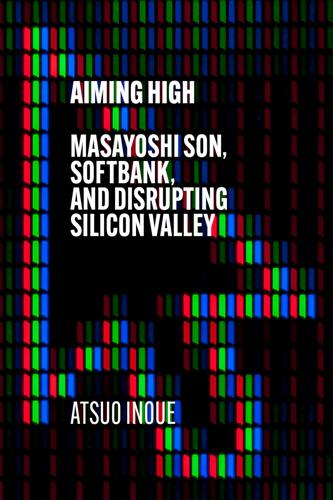
Aiming High: Masayoshi Son, SoftBank, and Disrupting Silicon Valley
by
Atsuo Inoue
Published 18 Nov 2021
With manual labour putting a strain on your body, intellectual work was the only option for Son. Son, however, didn’t have any money or the connections to get that kind of work. There was one and only one thing he could do, he decided. He would come up with inventions, patent the ideas, then sell them on. Matsushita Konosuke, the ‘God of Management’ and founder of Panasonic, had got his start at a small factory. Another business forebear Son looked up to, his first steps towards becoming a global electronics magnate had been the invention of the two-way socket and the bullet-shaped bicycle lamp. Son now had his precedent – it was time to start inventing things.
…
Son was furious at Nishi’s way of doing business – it just wasn’t fair – but thinking more broadly about the future of the personal computer he would do whatever it took to stymie Nishi’s plan for a monopoly. He would have to take on Nishi head-on whilst bedridden. The first time Nishi and Son had met was the summer of 1977 at Matsushita Electric Industrial in Osaka, whilst Son was still studying at Berkeley. Introducing the two to each other was Maeda Hirokazu, Matsushita’s Head of Technology R&D, who for whatever reason did so in English. Son was at Matsushita as, having concluded his deal with Sharp for the pocket translator, he was going to be signing other agreements for similar hand-held learning devices. Nishi was introduced to Son by Maeda with the words, ‘This fella’s quite an interesting character.’
…
The judge would see them. Chapter 10 Contract signed and dated In the summer of 1977 Son had written to 50 Japanese home appliance manufacturers detailing his intent to develop a talking electronic translator, making plans to visit the 10 or so who replied in person, amongst which were Canon, Omron, Casio, Matsushita Electric Industrial (now Panasonic) and Sharp. He took advantage of the summer holidays and travelled back to Japan with Mozer in tow. Son’s younger brother Taizo – who at the time was yet to enter primary school – can still vividly recall his older brother coming home, the whole family gathering around as Son and Mozer gave a demonstration of their prototype talking translator.

Hello, Habits
by
Fumio Sasaki
Published 6 Nov 2020
You might as well make a bold change if you can’t do it While we’re on the subject of the importance of setting objectives, there’s a story I like that I want to share. Matsushita Electric (called Panasonic today) is said to have set up a plan to reduce its electricity bill by 10 percent in order to cut back on costs. This didn’t go well. When its executives gathered and discussed what they should and shouldn’t do, the company’s founder Konosuke Matsushita is said to have said: “All right. Then we will change our objective and aim for a reduction by half instead of 10 percent.” An objective of a 10 percent reduction is tough, because it involves superficial techniques.

Radical Uncertainty: Decision-Making for an Unknowable Future
by
Mervyn King
and
John Kay
Published 5 Mar 2020
Another of the few business strategy writers worth reading, Henry Mintzberg, describes the problem created by the approaches to business caricatured by the weekend strategy retreats as follows: ‘We are often, in the business world, over-led and undermanaged . . . Senior management is supposedly seeing the big picture but, in dysfunctional cases, is not in touch with the details.’ 4 Mintzberg continues with a quotation from Konosuke Matsushita, founder of Panasonic Corp., asserting that ‘Big things and little things are my job. Middle level arrangements can be delegated.’ So, Mintzberg summarises, ‘In other words, you construct the big picture out of the little details. It’s like painting a painting; you paint it one brush stroke at a time.’
…
Kung Bushmen, 216 , 217 , 325 Lampert, Eddie, 287–9 , 292 Lampson, Butler, 28 Landon, Alf, 240 , 390 Laplace, Pierre-Simon, 70 , 199 Lascaux cave paintings, 216 law: civil law and common law jurisdictions, 205–6 , 213–14 ; ‘eat what you kill’ policies, 409 ; legal reasoning, 194–5 , 196–8 , 205–7 , 210–14 , 410 , 415 , 416 ; presumption of innocence, 210 ; and probabilistic reasoning, 196 , 197 , 198–203 , 206–7 , 210–12 , 214 ; ‘the prosecutor’s fallacy’, 201–2 , 203 ; ‘reasonable doubt’ concept, 198 , 201 , 205–6 , 211–12 ; and ‘rodeo problem’, 206–7 ; search for ‘best explanation’, 211–14 ; and statistical discrimination, 207–8 Lawson, Nigel, 291 Leamer, Edward, 100 Leamon, Nathan, The Test , 268 Lee, General Robert E., 188 Leeson, Nick, 411 Lehman Brothers, failure of (2008), 5 , 36 , 158–9 , 267 , 410–11 , 412 Leonardo da Vinci, 219 , 421 , 428 LeRoy, Stephen, 74 , 78 Let’s Make a Deal (US quiz show), 62–3 , 65 , 69 Lewis, Michael, 135 , 215 ; The Undoing Project , 121 , 393–4 Libet, Benjamin, 171 LIBOR scandal, 192 Libratus (poker-playing computer), 263 life expectancy, 43 , 56 , 57 , 161 , 232–3 Lincoln, Abraham, 266 , 269 , 290 Literary Digest , 240 , 390 Livy (Roman historian), 54 , 186 , 187 Lloyds Bank, 325 Lloyd’s of London, 55–6 , 322–4 , 325 , 326 Loch Ness monster, 325 , 326 Loewenstein, George, 128–9 , 135 , 310 London School of Economics, 339 , 382–3 Long Term Capital Management, 153 , 309 Louis XIV, King of France, 411 Lucas, Robert, 36 , 92 , 93 , 338–9 , 341 , 345 , 346 , 348 , 354 Maa-speaking people of East Africa, 160–1 , 189 MacArthur, Douglas, 292–3 , 420 Macartney, Lord, 419 Mackay, Charles, Extraordinary Popular Delusions and the Madness of Crowds , 315 Malthus, Thomas, 253 , 358–61 , 362–3 Mandelbrot, Benoit, 238 Manhattan grid plan, 424–5 Manville, Brook, 374 Mao Tse-tung, 4–5 , 292 Markowitz, Harry, 307 , 308 , 309–10 , 318 , 320 , 332 , 333 , 366 Márquez, Gabriel García, 226 Marshall, Alfred, 276 , 381 , 382 Marshall, Barry, 284 , 306 Marshall, George, 292 Marxism, 220 Mary Celeste mystery (1872), 33–4 , 44 Mary Poppins (film, 1964), 306 mathematical reasoning, xiv , 12 , 19 , 42–3 , 47 , 53–4 , 93 , 343 , 401 , 404–5 ; appropriate use of, 383 ; fixed point theorems, 254 ; fractal geometry, 238–9 ; ‘grand auction’ of Arrow and Debreu, 343–5 ; and historical narratives, 188 ; small world applications of, 175–6 Matsushita, Konosuke, 410 Mauss, Marcel, The Gift (1925), 190–1 Max Planck Institute, Berlin, 152 maximising behaviour, xiv , 258 , 381–2 ; ‘ambiguity aversion’ concept, 135 ; and evolutionary rationality, 157 , 158 , 166–7 ; and greed, 127–8 , 409 ; limits to, xiv–xv , 41–4 , 152 , 171–2 , 310 , 345 , 382 , 400–1 , 435–44 ; maximising expected utility, 108 , 111–14 , 115–18 , 129–30 , 400 ; and utilitarian theory, 110–11 Maxwell, Robert, 312 , 313 May, Robert, 375 Maynard, John, 156 McHugh, Dodd, 425 McLaren racing team, 391 McNamara, Robert, 281–2 , 298–300 McRaven, Admiral William, 298 Meadow, Professor Sir Roy, 197–8 , 200 , 201 medicine, 22 , 32 , 39–40 , 88–9 , 383 , 384 , 387 ; computer technologies, 185–6 ; doctors’ decision-making, 184–6 , 194 , 398–9 ; HIV infections, 375–6 ; infectious diseases, 282–3 , 285 ; puerperal fever, 282–3 , 306 ; ‘randomised controlled trials’ (RCTs), 243–5 ; screening for cancer, 66–7 , 206 ; stomach ulcers, 284 , 306 ; twentieth century improvements, 57 ; and uncertainty, 44–5 mercantilism, 249 Mercier, Hugo, 162 , 272 , 415 Méré, Chevalier de, 53 , 59 , 60 , 61 Merton, Robert C., 309 Merton, Robert K., 35–6 , 309 MESSENGER (NASA probe), 18–19 , 26 , 35 , 218 , 394 meteorology, 23 , 43 , 101–2 , 406 Michelangelo, 421 , 428 Michelson, Albert, 430 Microsoft, 29 , 30–1 migration, 369–70 , 372 ; European to USA, 427 military campaigns and strategy, 3–4 , 24–6 , 292–3 , 294–5 , 298–300 , 412–13 , 433 military-industrial complex, 294 Mill, John Stuart, 110 , 429–30 ; System of Logic (1843), 70 Miller, Arthur, Death of a Salesman , 220 Ming emperors, 419 Mintzberg, Henry, 296 , 410 Mirowski, Philip, 388 MMR triple vaccine, 394 mobile phones, 30–1 , 38–9 , 257 , 344 models: appropriate use of, 376–7 ; of Canadian fisheries, 368–9 , 370 , 371–2 , 423 ; consulting firms, 180 , 182–3 , 275–6 , 365 , 370–1 , 405 ; EU migration models, 370 , 372 ; invented numbers in, 320 , 363–4 , 365 , 371 , 373 , 404 , 405 , 423 ; maps as not the territory, 391–4 ; microeconomic research, 382 , 392 ; misuse/abuse of, 312–13 , 320 , 368–76 , 405 ; at NASA, 373–4 , 391–2 ; policy-based evidence, 370–1 , 373–4 , 405 , 412–13 ; and public consultation, 372 ; reproduction of large/real-world, 390–2 ; role of incentives/targets, 409 ; stationarity as assumed, 333 , 339 , 340–1 , 349 , 350 , 366–7 , 371–2 ; as tools, 384–6 ; transport modelling, 363–5 , 370 , 371 , 372 , 396 , 404 , 407 ; WebTAG, 363–4 , 365 , 371 , 404 , 407 ; WHO HIV model, 375–6 ; see also economic models; small world models Moivre, Abraham de, 57–8 , 233 money supply, 96 Moneyball (film, 2011), 273 MONIAC (Monetary National Income Analogue Computer) machine, 339 ‘Monte Carlo simulations’, 365 Montgomery, Bernard Law, 293 Moore, Dudley, 97 Morgenstern, Oskar, 111 , 133 , 435–7 Moses, Robert, 425 Mourinho, José, 265 Mrs White’s Chocolate House (St James’s), 55 Murray, Bill, 419 Musk, Elon, 128 , 130 , 307 Mussabini, Sam, 273 mutualisation: in insurance markets, 325–6 ; and !
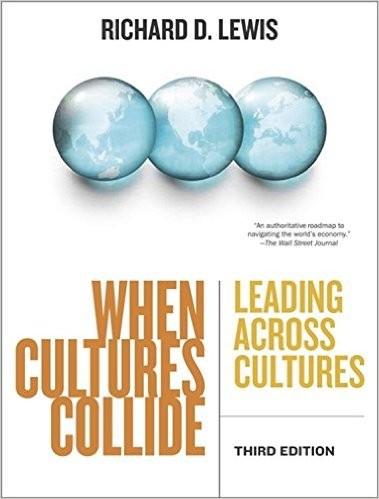
When Cultures Collide: Leading Across Cultures
by
Richard D. Lewis
Published 1 Jan 1996
Great leaders captivated willing disciples through sheer charisma—Alexander the Great, Caesar, Tamerlane, Hernan Cortés, Simón Bolívar, Kemal Atatürk, Mahatma Gandhi, Winston Churchill, Chou-en-Lai and Nelson Mandela are a few who come to mind. In the modern era, business leaders have occasionally shown the charismatic and visionary leadership that attracts loyal followers; examples are Henry Ford, Akio Morita, Konosuke Matsushita and Richard Branson. Religion has also played a major role in mass-motivation throughout the historical era. Twenty-First Century Aspirations If you consider the main cultural categories I introduced in Chapter 3— linear-active, multi-active and reactive—you can discern differences in the motivational patterns of cultural groups in each category, both in terms of traditional features and developing aspirations as a new century of opportunity gets under way.
…
Minoan collective rule—one of the earliest examples we know about—inspired a similar type of leadership both in the Greek city–states and later in Rome. In another hemisphere, Mayan and North American Indians held similar traditions. In the business world, a series of individuals have also demonstrated outstanding abilities and success in leadership—Ford, Rockefeller, Agneli, Berlusconi, Barnevik, Gyllenhammer, Iacocca, Geneen, Matsushita and Morita are some of them. It is now common for leadership and authority also to be vested in boards of directors or management committees. 108 WHEN CULTURES COLLIDE USA UK for ec country managers ts s tan da rd d as casual leadership ize rolli ng g rly arte qu repo rtin HQ upper/middle managers make individual decisions STRUCTURED INDIVIDUALISM FRANCE SWEDEN GERMANY autocratic primus inter pares hierarchy, consensus ASIA LATIN/ARAB INDONESIA military Chinese using know-how consensus rule nepotism NETHERLANDS Figure 7.2 Leadership Styles STATUS, LEADERSHIP AND ORGANIZATION 109 JAPAN for ra s tific atio personal approach n official channel id ea s icie pol RUSSIA ideas ideas ringi-sho consensus ideas sub-team trusted, efficient lieutenant slow implementation AUSTRALIA one of the mates SPAIN FINLAND officer helps out in crisis INDIA Trade Group family sons, nephews human force traditional organized quick result 110 WHEN CULTURES COLLIDE The way in which a cultural group goes about structuring its commercial and industrial enterprises or other types of organizations usually reflects to a considerable degree the manner in which it itself is organized.
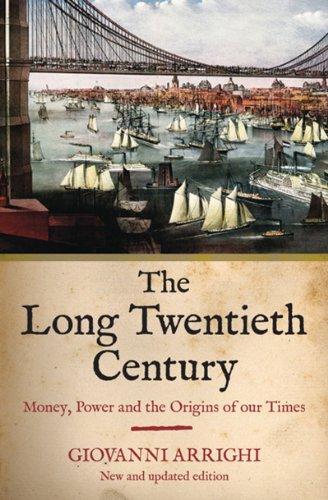
The Long Twentieth Century: Money, Power, and the Origins of Our Times
by
Giovanni Arrighi
Published 15 Mar 2010
Wr ana’ Human Progress, New York: Norton 1968. Neumann, Franz, Be/7emot/7: 77Je Structure and Practice of National Socialism, London: Gollancz 1942. Nussbaum, Arthur, A Concise History of the Law of Nations, New York: Macmillan 1950. O’Connor, James, 771e Fiscal Crisis of the State, New York: St Martin’s Press 1973. Odaka, Konosuke, “Is the Division of Labor Limited by the Extent of the Market? A Study of Automobile Parts Production in East and Southeast Asia,” in K. Ohkawa, G. Ranis, and L. Meissner, eds., ]apan and the Developing Countries: A Comparative Analysis, Oxford: Basil Blackwell 1985,pp.389-425. Ofle, Claus, Disorganized Capitalism: Contemporary Transformations of W/or/e ana’ Politics, Cambridge, MA: MIT University Press 1985.
…
What cultural and political barriers could not stop, the barriers to entry built into the very structure of US corporate capitalism did. The complexities of US corporate life proved to be more insurmountable INTRODUCTION 19 barriers to entry for Japanese money than cultural hostility and political mistrust. The biggest ever Japanese takeovers in the United States — Sony’s takeover of Columbia Pictures in 1989, and Matsushita’s takeover of MCA the following year — failed completely in their objective. When the Sony deal was struck, the media over-reacted and Newswee/e‘s cover talked of Japan’s “invasion” of Hollywood. And yet, as Bill Emmott wrote in the op-ed page of the New York Times (26 November 1993: A19), less than two years passed before it became clear that the scares and hyperbole had got it wrong. . . .